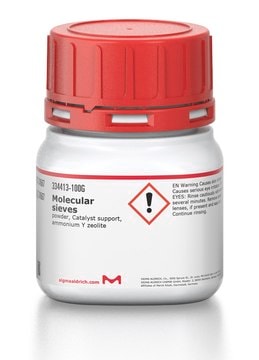모든 사진(1)
About This Item
실험식(Hill 표기법):
C10H18O2
CAS Number:
Molecular Weight:
170.25
Beilstein:
1721990
MDL number:
UNSPSC 코드:
12352211
PubChem Substance ID:
NACRES:
NA.25
추천 제품
분석
≥95.0% (HPLC)
95.0-105.0% (T)
형태
liquid
작용기
carboxylic acid
지질 유형
unsaturated FAs
저장 온도
−20°C
SMILES string
CCCCCCC\C=C/C(O)=O
InChI
1S/C10H18O2/c1-2-3-4-5-6-7-8-9-10(11)12/h8-9H,2-7H2,1H3,(H,11,12)/b9-8-
InChI key
WXBXVVIUZANZAU-HJWRWDBZSA-N
유사한 제품을 찾으십니까? 방문 제품 비교 안내
관련 카테고리
애플리케이션
cis-2-Decenoic acid may be used to study its cytotoxic effect on the human HepG2 cell line. It has also been used to study its synergistic anti-spirochetal effect.
생화학적/생리학적 작용
cis-2-Decenoic acid is a fatty acid messenger (signaling molecule) produced by Pseudomonas aeruginosa. It possesses anti-biofilm property and converts most of the cells to planktonic (free-swimming) phenotype. cis-2-Decenoic acid retains the susceptibility of the bacteria towards antimicrobial agents. It does not exhibit any toxicity towards human cells and thus, might be used for treating biofilm-associated infections. cis-2-Decenoic acid is considered active even in nano-molar ranges. It mediates the transition of dormant P. aeruginosa and Escherichia coli to their biologically active state without affecting the number of cells. cis-2-Decenoic acid is effective against E. coli and Klebsiella pneumoniae mixed-species biofilms when used along with antimicrobial agents.
포장
Bottomless glass bottle. Contents are inside inserted fused cone.
신호어
Warning
유해 및 위험 성명서
Hazard Classifications
Aquatic Chronic 3 - Eye Irrit. 2 - Skin Irrit. 2
Storage Class Code
10 - Combustible liquids
WGK
WGK 1
시험 성적서(COA)
제품의 로트/배치 번호를 입력하여 시험 성적서(COA)을 검색하십시오. 로트 및 배치 번호는 제품 라벨에 있는 ‘로트’ 또는 ‘배치’라는 용어 뒤에서 찾을 수 있습니다.
이미 열람한 고객
Majed Alrobaian et al.
Molecules (Basel, Switzerland), 24(10) (2019-05-28)
Two series of novel 5-arylazo-3-cyano-2-(2″,3″,4″,6″-tetra-O-acetyl-β-d-galacto pyranosyloxy) pyridines and 3-cyano-2-(2″,3″,4″,6″-tetra-O-acetyl-β-d-galactopyranosyloxy) pyridines were synthesized in high yields utilizing a microwave-assisted synthesis tool guided by the principles of green chemistry. The chemical structures of the new substances were confirmed on the basis of
A Goc et al.
Journal of applied microbiology, 123(3), 637-650 (2017-06-24)
Borrelia sp., a causative pathogenic factor of Lyme disease (LD), has become a major public health threat. Current treatments based on antibiotics often lead to relapse after their withdrawal. Naturally derived substances that could work synergistically to display higher efficacy
Han-Shin Kim et al.
Biotechnology and bioengineering, 118(1), 82-93 (2020-09-04)
Bacterial biofilm formation causes serious problems in various fields of medical, clinical, and industrial settings. Antibiotics and biocide treatments are typical methods used to remove bacterial biofilms, but biofilms are difficult to remove effectively from surfaces due to their increased
Martha María Juárez-Rodríguez et al.
Frontiers in cellular and infection microbiology, 10, 597517-597517 (2021-02-16)
Blocking virulence is a promising alternative to counteract Pseudomonas aeruginosa infections. In this regard, the phenomenon of cell-cell communication by quorum sensing (QS) is an important anti-virulence target. In this field, fatty acids (FA) have gained notoriety for their role
Thomas Tørring et al.
Chembiochem : a European journal of chemical biology, 18(7), 638-646 (2017-01-25)
Legionella pneumophila, the causative agent of Legionnaires' disease, is a Gram-negative gammaproteobacterial pathogen that infects and intracellularly replicates in human macrophages and a variety of protozoa. L. pneumophila encodes an orphan biosynthetic gene cluster (BGC) that contains isocyanide-associated biosynthetic genes and
자사의 과학자팀은 생명 과학, 재료 과학, 화학 합성, 크로마토그래피, 분석 및 기타 많은 영역을 포함한 모든 과학 분야에 경험이 있습니다..
고객지원팀으로 연락바랍니다.













